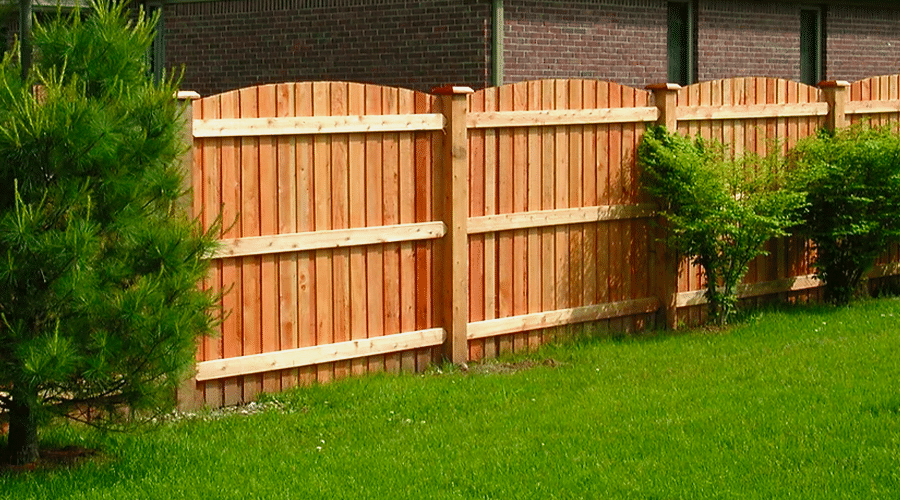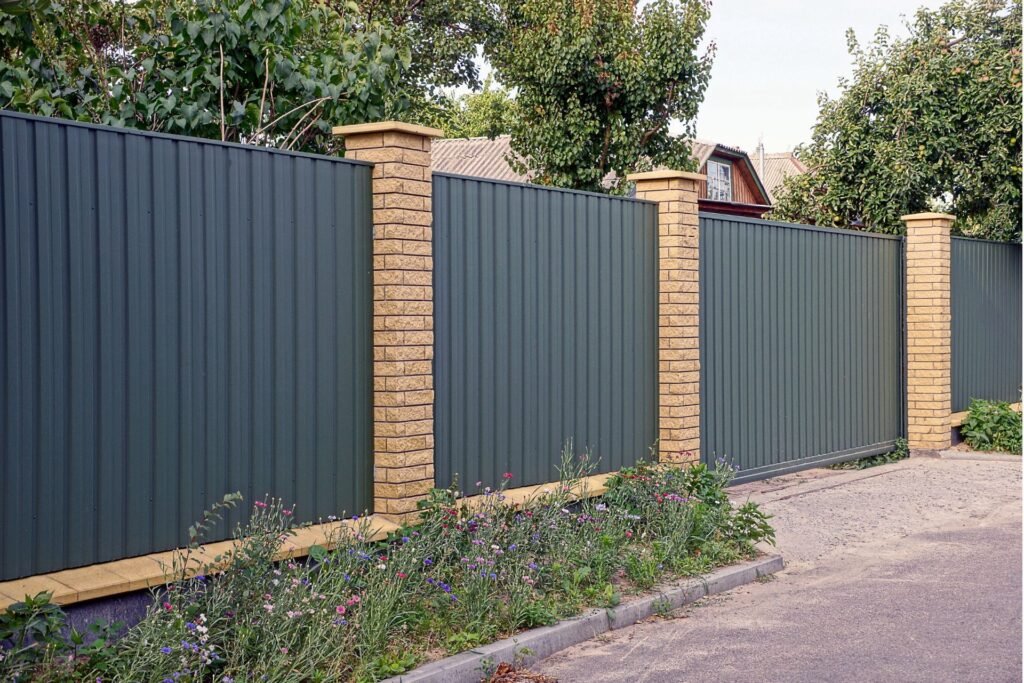A Comprehensive Guide to Fence Install: What You Required to Find Out About Fence Solutions
When it comes to installing a fencing, you've obtained a whole lot to ponder. You'll need to assess your residential or commercial property and determine if you want to deal with the installment yourself or employ a professional.
Comprehending Various Sorts Of Fence Products
When you're picking a fencing, recognizing the various sorts of secure fencing products is important. Each product offers special advantages and downsides, impacting your decision. Wood gives a timeless appearance and can be customized, however it needs normal upkeep and might rot with time. Plastic is low-maintenance and resilient, withstanding fading and parasites, yet it can be pricier upfront. Chain-link fence is cost-efficient and practical for enclosing large locations, though it does not have personal privacy and visual appeal. Metal fencing, like functioned iron or aluminum, offers strength and elegance but may require corrosion protection. Composite materials blend the most effective of timber and plastic, offering toughness with an all-natural appearance. Consider your spending plan, wanted aesthetic appeals, and maintenance preferences when assessing these choices. Eventually, picking the ideal material will help you produce a fence that satisfies your needs and boosts your property's value.
Assessing Your Building and Fence Needs
Before you begin your fence installation, it's essential to analyze your residential property limits and the function of your fencing. Recognizing regional regulations and authorizations will certainly also assist you avoid any type of lawful problems down the line. By considering these variables, you'll guarantee your fencing meets both your requirements and community criteria.
Property Limits and Lines
Recognizing your property boundaries is important for an effective fencing setup, as it not only assists you figure out where your fencing will go however additionally guarantees you're appreciating your next-door neighbors' area. Begin by assessing your building deed or survey, which typically details the exact boundaries. You may additionally wish to seek advice from a specialist surveyor if you're not sure.
Bear in mind, local zoning laws may determine fencing positioning and elevation, so inspect those regulations too. Taking these steps warranties your fencing is effectively placed and certified, making the whole process smoother for you.
Purpose of Fencing
Third, fencing can define your residential property limits, making it clear where your space ends and your next-door neighbor's starts. A well-placed fence can assist take care of noise from close-by roadways or next-door neighbors and also maintain pets and children safe. By examining your details needs, you can select the right type of fencing to accomplish these advantages efficiently.

Local Rules and Permits
Exactly how can you ensure your fence installment adheres to local policies? Start by contacting your neighborhood zoning office or local site. Fence Builders. They often have standards regarding fence height, products, and placement. You'll also desire to discover if you need a permit prior to starting your job. Some locations call for licenses for any kind of brand-new fence, while others may only require them for taller frameworks.
Furthermore, consider residential or commercial property lines and any easements on your land. Noting your borders can stop disagreements with neighbors or possible lawful issues. By recognizing these regulations in advance, you can stay clear of costly errors and determine your fencing is developed to last, enhancing both your building's value and your satisfaction.
Local Rules and Permits for Fence
Prior to you start your fencing job, it's vital to examine regional laws and obtain any required licenses. Each city or region has its very own guidelines relating to fence height, products, and positioning. These guidelines guarantee that your fencing abides by safety requirements and neighborhood aesthetic appeals.
You may need to send a fence plan, describing measurements and materials. Some areas might even need a survey to confirm home limits.
Overlooking to follow these guidelines can cause fines or forced elimination of your fence, wasting both money and time. So, take the time to research and safeguard the appropriate permits for a smooth setup process. This action is important in making certain your job lines up with neighborhood legislations and area requirements.
Choosing Between DIY Installment and Specialist Solutions
Are you considering whether to take on the fencing installation yourself or employ a specialist? If you're handy and have experience with comparable jobs, Do it yourself might save you money.
Following, consider the moment commitment. Setting up a fencing requires time, and if you're juggling a busy schedule, working with a professional can assure it obtains done efficiently. Additionally, believe regarding the intricacy of the task. If your backyard has tough surface or specific design needs, experts bring knowledge that can make a difference.
Finally, factor in neighborhood guidelines. An expert understands the licenses and codes needed, aiding you avoid prospective fines. Ultimately, weigh your abilities, time, complexity, and guidelines to make the finest selection for your secure pop over to this web-site fencing project.
Step-by-Step Guide to Fence Setup
When you have actually chosen to move on with your fence setup, following an organized detailed technique will assure a smooth process. Start by noting the fence line with stakes and string to imagine the design. Next, check local guidelines to validate conformity with height and building lines.
Dig message holes a minimum of go to my blog two feet deep, spaced according to your fencing type-- generally 6 to 8 feet apart. Put the articles into the holes and load them with concrete for stability. Once the articles are set, connect the straight rails or panels, ensuring they're level.
Safeguard the panels or pickets, verifying they align properly. If you're making use of entrances, mount them last, ensuring they turn easily. Ultimately, check for any kind of loose connections and make essential adjustments. Your fence must currently prepare to enhance your home and provide the privacy or protection you need!
Maintenance Tips for Durability of Your Fencing
To maintain your fence looking great and long-term longer, normal maintenance is key. You must establish a cleaning timetable, examine for any damage, and apply safety finishings as needed. By staying positive with these jobs, you'll ensure your fencing continues to be sturdy and attractive for many years to find.
Routine Cleansing Set Up
While it could be very easy to forget, developing a normal cleansing timetable is essential for maintaining the longevity of your fencing. Beginning by washing your fencing with water a minimum of when every season to remove dust and particles. For wood fences, utilize a mild soap option and a soft brush to scrub away any type of mold or mildew. Do not neglect to look for any corrosion on steel fences; a wire brush can aid remove it, complied with by a coat of rust-resistant paint. If you live in a location with hefty pollen or dust, you might intend to enhance your cleaning regularity. Maintaining your fence tidy not just click this link enhances its look however likewise expands its life, conserving you cash over time.
Evaluate for Damages
Regularly evaluating your fence for damages is important if you wish to preserve its stability and longevity. Begin by walking around your fence to look for noticeable indicators of wear, such as fractures, loose boards, or corrosion. Pay special focus to the base and messages, where dampness can cause considerable issues. If you observe any kind of damage, take notes and figure out the urgency of repair work. Resolving small problems promptly can avoid them from intensifying right into bigger, more expensive troubles. Look for any indications of parasites, like termites or woodpeckers, that could endanger your fencing's framework. Ultimately, verify that your fence stays steady by looking for any kind of leaning or drooping areas. Normal inspections will keep your fence looking great and operating correctly for many years to find.
Apply Safety Coatings
After inspecting your fence for damages, applying protective coverings is a crucial action in ensuring its long life. Depending upon the product, you'll intend to pick the right kind of covering. For wooden fencings, a premium sealant or timber tarnish can protect against wetness absorption and deter insects. If your fence is plastic or metal, think about a UV-protective spray or paint to avoid fading and corrosion.
Make sure to clean the surface area completely before application, as dust and gunk can threaten the layer's effectiveness. Use the covering in completely dry weather condition for better attachment, and don't neglect to comply with the manufacturer's directions for the best outcomes. Consistently reapply every few years to maintain your fence looking great and standing solid versus the elements.
Cost Considerations and Budgeting for Your Fencing Job
When planning your fencing project, comprehending cost factors to consider is important to remaining within budget. Begin by identifying the kind of material you want, as prices can vary greatly between timber, vinyl, and steel. Don't fail to remember to consider labor prices-- working with professionals may conserve you time however can raise your general costs.
Following, determine your property to compute the straight video footage needed, as this straight impacts material prices. Furthermore, take into consideration any kind of authorizations you could require, which can include in your budget.

Last but not least, it's an excellent idea to reserve a backup fund for unexpected expenses. By planning meticulously and considering these aspects, you can create a sensible spending plan that fulfills your fence needs without breaking the financial institution.
Regularly Asked Questions
For how long Does the Ordinary Fencing Installment Take?
The average fencing installation typically takes one to 3 days, depending on the fence kind and size of your backyard. You'll require to think about any type of delays because of weather or allow needs as well.
What Should I Do if My Fencing Is Harmed?
If your fencing is damaged, first assess the extent of the damage. Repair minor problems yourself, but also for major problems, take into consideration speaking to a specialist. Do not wait also long; it'll assist stop even more difficulties.
Can I Mount a Fencing on an Incline?
Yes, you can mount a fencing on a slope. You'll require to change your installation method, either by tipping the panels down or using a racked layout to ensure stability and proper positioning with the terrain.
What Are the very best Practices for Fencing Painting?
To paint your fence effectively, start with proper cleansing and sanding. Usage high-quality paint and apply in also strokes. Do not neglect to pick the ideal climate for painting, guaranteeing it's dry and moderate.
Just how Typically Should I Inspect My Fencing?
You should examine your fencing a minimum of twice a year, concentrating on indications of damage, rot, or rust. Routine checks aid you catch concerns early, ensuring your fence remains tough and aesthetically attractive longer.